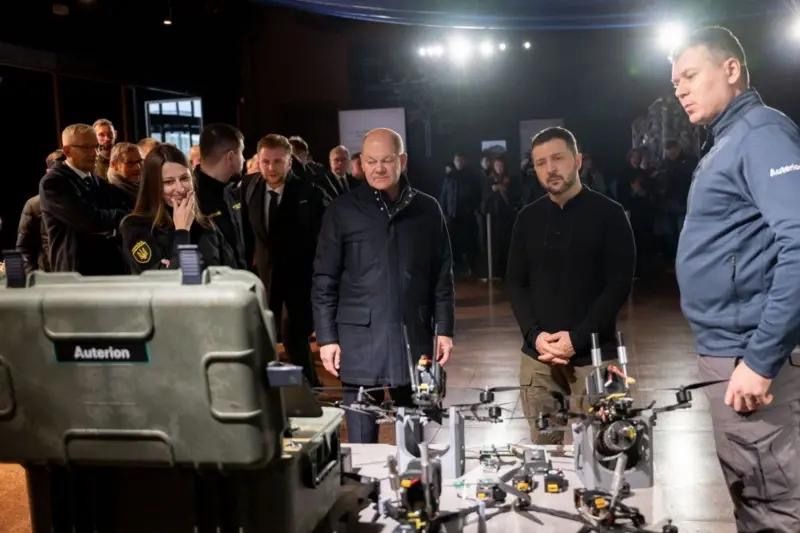If you’re getting tired of reading about drones, you’re in the wrong place—because business is booming. Just look at Auterion: The autonomy software firm said Monday it will send 33,000 AI-powered drone guidance “strike kits” to Ukraine by year’s end under a new $50M Pentagon contract.
While this isn’t Auterion’s first rodeo in Ukraine, it’s certainly the biggest. “We have previously shipped thousands of our AI strike systems to Ukraine, but this new deployment increases our support more than tenfold,” Auterion CEO Lorenz Meier said in a statement. “This is not only significant for Ukraine’s defense but also represents a substantial advancement in drone warfare technology.”
Deutschland drones: Founded in Switzerland, Auterion is now dually headquartered in Munich and Virginia, having moved its US HQ from California to the DC area last year to capitalize on the drone fever sweeping through the capital. That move seems to be paying off.
Here’s the tech the Pentagon seems to be drooling over:
- Skynode, Auterion’s flagship modular guidance autonomy system. It integrates a flight controller, onboard mission computer, AI processing, and LTE connectivity into one compact unit.
- The whole thing runs on AuterionOS, a hardened version of the open-source PX4 autopilot platform, designed to adapt across drone airframes and missions.
- The system’s open standards are designed for rapid integration, enabling manual drones to become semi-autonomous, GPS-resilient, and capable of software-defined targeting real easy and real quick.
“These technologies have reduced the training time needed for pilots, overcome jamming, increased hit-rates, and adapted rapidly to changes on the battlefield,” Meier told Tectonic via email. Plus, the company says its system can track and engage moving targets from a kilometer away.
Test lab: That rapid, real-life battlefield adaptation—Meier says the software is “constantly updated, with two-week development cycles”—is a big selling point for the Pentagon and Auterion’s other customers.
“Our work in Ukraine has shown the powerful role that cost-effective, targeted autonomous drones can play,” he told Tectonic. “One crucial lesson has been the importance of software-defined warfare, in which actors can adjust rapidly to changes on the battlefield.”
The iterative environment in Ukraine has helped refine Auterion’s software—and it has been good for business. “Battle-hardened drone technology proven in Ukraine has become highly sought after by NATO members and in the Indo-Pacific,” the company said in a statement.
Drone demand: While Auterion certainly cut its teeth on the battlefield in Ukraine, its tech has made its way around the world, especially in places with 2027 circled on the calendar.
In June, Taiwan’s weapons research agency and Thunder Tiger, a major Taiwanese drone-maker, carried out live-fire tests of Ukraine-inspired kamikaze drones powered by Auterion’s strike system. Thunder Tiger bought Auterion software licenses for 25,000 drones, including for use on exported drones.
NATO is watching closely, too. “The capabilities we have learned from our work supporting democracies globally are being applied by the US and German governments, as well as other NATO members,” Meier said. He expects that interest to grow—“especially as NATO looks to rapidly build an arsenal of interoperable, unmanned autonomous systems.”

